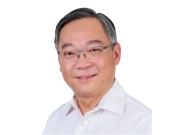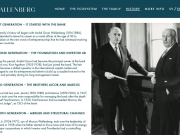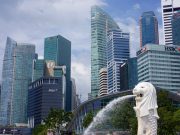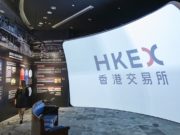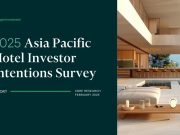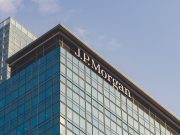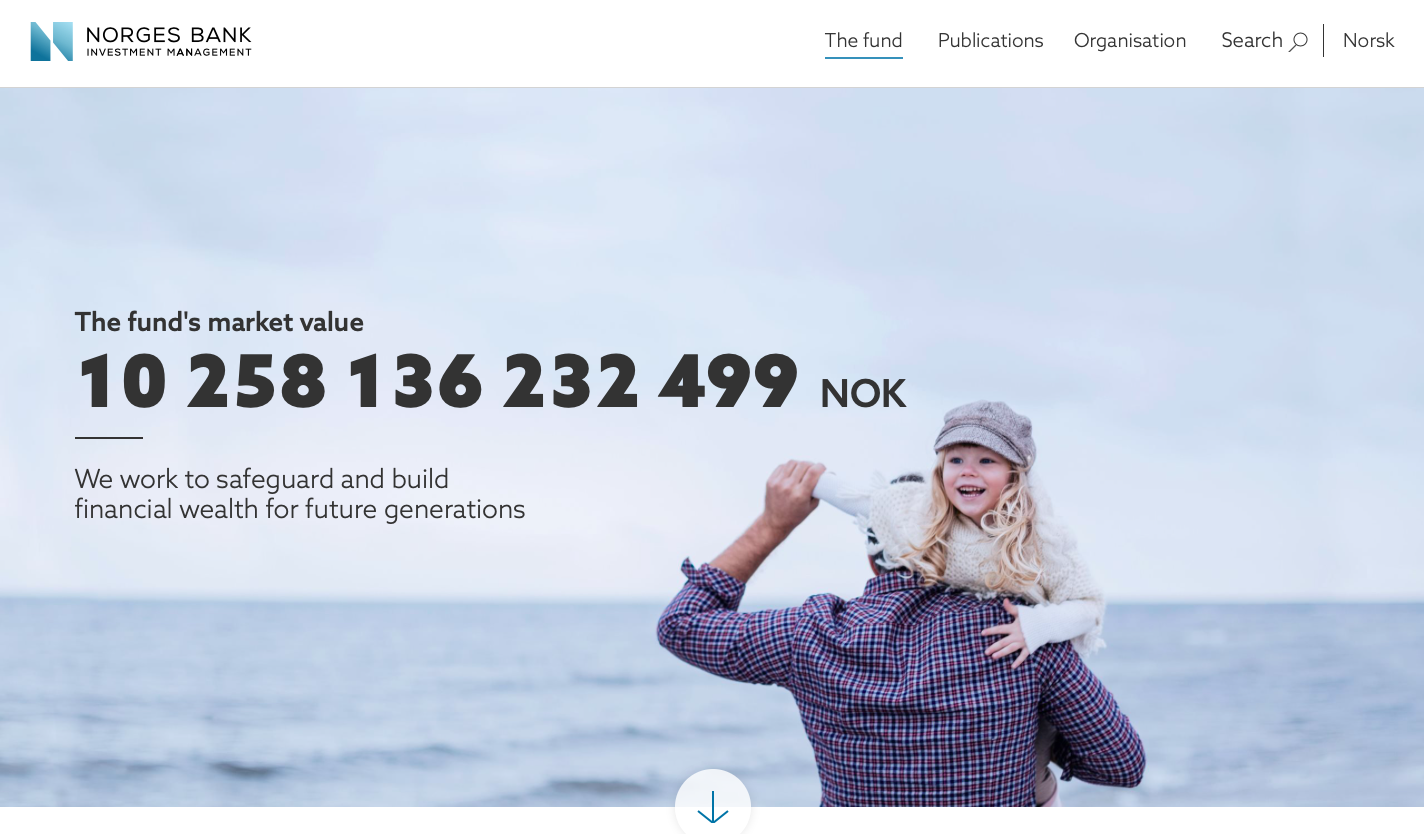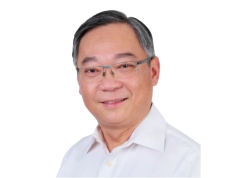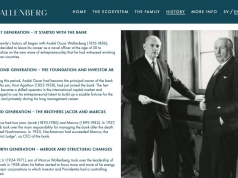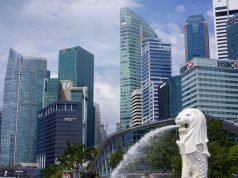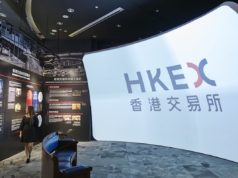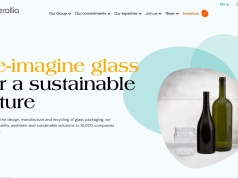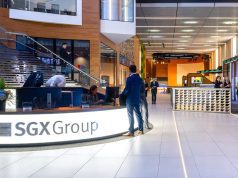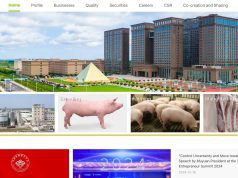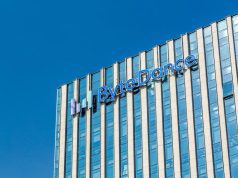The Thinking Ahead Institute The Asset Owner 100 2023 Study: $23.4 Trillion AUM, Asset Allocation Equity 42.6%, Fixed Income 30.3%, Alternatives 27.1%, Top 5 Asset Owners Japan Government Pension Investment Fund, Norway Norges Bank Investment Management, China Investment Corporation, China SAFE Investment Company, Abu Dhabi Investment Authority, Kuwait Investment Authority
15th Dec 2023 | Hong Kong
The Thinking Ahead Institute has released The Asset Owner 100 2023 Study, providing key insights and asset allocation of the the top 100 largest asset owners in 2022 (Pension Funds, Sovereign Wealth Funds, Master Trusts / OCIO ~ Outsourced Chief Investment Officer). In 2022, the Top 100 Asset Owners managed $23.4 trillion AUM (-8.7%), the Top 20 Assets Owners managed $12.9 trillion (55.2% of total AUM), and the Top 5 Assets Owners manage $5.7 trillion (24.4% of total AUM ). The Top 100 Asset Owners Asset Allocation (Weighted) – Equity 42.6%, Fixed Income 30.3%, Alternatives 27.1%. Top 20 Asset Owners – Asset Allocation – Equity 47.7%, Fixed Income 28.6%, Alternatives 23.7%. Asset Owners Type – Pension Funds 52.8%, Sovereign Wealth Funds 38.9%, Master Trusts & OCIO 8.3%. Asset Owners by Region – North America 33.9% ($7.93 trillion), APAC 33.7% ($7.89 trillion), EMEA 32.4% ($7.59 trillion). No. of Asset Owners by Region – North America 51, EMEA 29, APAC 20. Top 5 Country Share of Top 100 Asset Owners – United States 27.3%, China 10.8%, Japan 7.9%, United Arab Emirates 6.8%, Canada 6.6%. Top 10 Asset Owners – Government Pension Investment Fund (Japan), Norges Bank Investment Management (Norway), China Investment Corporation, SAFE Investment Company (China), Abu Dhabi Investment Authority (UAE), Kuwait Investment Authority, National Pension Service (South Korea), GIC (Singapore), Federal Retirement Thrift (United States), Public Investment Fund / Sanabil Investments (Saudi Arabia). Top 10 Sovereign Wealth Funds – Norges Bank Investment Management, China Investment Corporation, SAFE Investment Company, Abu Dhabi Investment Authority, Kuwait Investment Authority, GIC, Public Investment Fund / Sanabil Investments, Qatar Investment Authority, Temasek, Mubadala Investment Company. Top 10 Pension Funds – Government Pension Investment Fund, National Pension Service, Federal Retirement Thrift, APG, California Public Employees, Canada Pension Plan, Central Provident Fund, National Social Security Fund, CDPQ, California State Teachers. Top 10 Master Trusts / OCIO – Mercer, Goldman Sachs, BlackRock, AON, WTW Investment Services, State Street Global Advisors, Russel Investments, Northern Trust, JP Morgan Asset & Wealth Management, SEI Investments. Top 10 Foundations & Endowments – The Bill & Melinda Gates Foundation, President & Fellows of Harvard College, Yale University Investment Fund, Lilly Endowment, Stanford University, Trustees of Princeton University, Wellcome Trust, National Rural Utilities Cooperative Finance Corporation, Massachusetts Institute of Technology, Howard Hughes Medical Institute. Top 10 Insurance Companies – Ping An Insurance, Allianz, Berkshire Hathaway, China Life Insurance, AXA, Prudential Financial, MetLife, Legal & General Group, Manulife Financial Corporation, Life Insurance Corporation of India. See below for key findings & summary | View report here:
“ $23.4 Trillion AUM, Asset Allocation Equity 42.6%, Fixed Income 30.3%, Alternatives 27.1%, Top 5 Asset Owners Japan Government Pension Investment Fund, Norway Norges Bank Investment Management, China Investment Corporation, China SAFE Investment Company, Abu Dhabi Investment Authority, Kuwait Investment Authority “
The Thinking Ahead Institute The Asset Owner 100 2023 Study

The Thinking Ahead Institute has released The Asset Owner 100 2023 Study, providing key insights & asset allocation of the the top 100 largest asset owners in 2022 (Pension Funds, Sovereign Wealth Funds, Master Trusts / OCIO ~ Outsourced Chief Investment Officer).
Summary:
- Top 100 Asset Owners AUM – $23.4 trillion (-8.7%)
- Top 20 Assets Owners – $12.9 trillion, 55.2% of total AUM
- Top 5 Assets Owners – $5.7 trillion, 24.4% of total AUM
- Top 100 Asset Owners Asset Allocation (Weighted) – Equity 42.6%, Fixed Income 30.3%, Alternatives 27.1%
- Top 20 Asset Owners – Asset Allocation – Equity 47.7%, Fixed Income 28.6%, Alternatives 23.7%
- Asset Owners Type – Pension Funds 52.8%, Sovereign Wealth Funds 38.9%, Master Trusts & OCIO 8.3%
- Asset Owners by Region – North America 33.9% ($7.93 trillion), APAC 33.7% ($7.89 trillion), EMEA 32.4% ($7.59 trillion)
- No. of Asset Owners by Region – North America 51, EMEA 29, APAC 20
- Top 5 Country Share of Top 100 Asset Owners – United States 27.3%, China 10.8%, Japan 7.9%, United Arab Emirates 6.8%, Canada 6.6%
- Top 10 Asset Owners – Government Pension Investment Fund (Japan), Norges Bank Investment Management (Norway), China Investment Corporation, SAFE Investment Company (China), Abu Dhabi Investment Authority (UAE), Kuwait Investment Authority, National Pension Service (South Korea), GIC (Singapore), Federal Retirement Thrift (United States), Public Investment Fund / Sanabil Investments (Saudi Arabia)
- Top 10 Sovereign Wealth Funds – Norges Bank Investment Management, China Investment Corporation, SAFE Investment Company, Abu Dhabi Investment Authority, Kuwait Investment Authority, GIC, Public Investment Fund / Sanabil Investments, Qatar Investment Authority, Temasek, Mubadala Investment Company
- Top 10 Pension Funds – Government Pension Investment Fund, National Pension Service, Federal Retirement Thrift, APG, California Public Employees, Canada Pension Plan, Central Provident Fund, National Social Security Fund, CDPQ, California State Teachers
- Top 10 Master Trusts / OCIO – Mercer, Goldman Sachs, BlackRock, AON, WTW Investment Services, State Street Global Advisors, Russel Investments, Northern Trust, JP Morgan Asset & Wealth Management, SEI Investments
- Top 10 Foundations & Endowments – The Bill & Melinda Gates Foundation, President & Fellows of Harvard College, Yale University Investment Fund, Lilly Endowment, Stanford University, Trustees of Princeton University, Wellcome Trust, National Rural Utilities Cooperative Finance Corporation, Massachusetts Institute of Technology, Howard Hughes Medical Institute
- Top 10 Insurance Companies – Ping An Insurance, Allianz, Berkshire Hathaway, China Life Insurance, AXA, Prudential Financial, MetLife, Legal & General Group, Manulife Financial Corporation, Life Insurance Corporation of India
Asset Owner Insights:
- Macro uncertainty – Volatility & uncertainty in global economy highest in a generation, New macroeconomic landscape that demands fresh understanding and management approach.
- Sustainability – Climate dominated sustainable investing field since net-zero commitments made, No accepted playbook for net zero investing, shift towards decarbonisation targets demands significant transition, increasing levels of regulation requiring significant attention and the challenges of politicisation growing
- Strategic Asset Allocation (SAA) & Total Portfolio Approach (TPA): – Majority of Asset Owners 100 funds set asset allocation through policy portfolios with Strategic Asset Allocation (SAA). Alternative methodology with Total Portfolio Approach (TPA) where goals are the central driving force and best ideas are incorporated through a competition for capital at the total portfolio level.
- Technology – Growing significance of artificial intelligence (AI) and data-driven strategies among asset owners.
- Culture & governance – Operating in this new era of volatile, uncertain, complex and ambiguous conditions requires strong governance to maintain long-term stability and to ensure robust risk management practices and informed decision-making. Asset Owners 100 demonstrated growing awareness of the organisational alpha in culture and governance.
- Geopolitical risk – Asset Owners 100 are increasingly concerned that geopolitical risk poses a threat to their future
- Horizon scanning – Comprehensive horizon scanning can help investors assess and anticipate trends, identify opportunities and mitigate risks.
- Systemic Risk – Rise in systemic risk puts emphasis on the need for forward thinking and re-positioning strategy with investment processes that are able to model, measure and adapt to systemic risk. Systemic risk historically has been about financial interdependency risks and geo-political risks. Systemic risks in the future are increasingly from climate, environmental and social sources. Future systemic risk is likely to be orders of magnitude bigger than prior versions
1) Asset Owners AUM
2022 AUM
- Top 100 Asset Owners AUM – $23.4 trillion (-8.7%)
- Top 5 Assets Owners – $5.7 trillion, 24.4% of total AUM
- Top 20 Assets Owners – $12.9 trillion, 55.2% of total AUM
Asset Owners Type:
- Pension Funds – 52.8%
- Sovereign Wealth Funds – 38.9%
- Master Trusts / OCIO – 8.3%
OCIO ~ Outsourced Chief Investment Officer
Asset Owners by AUM (Average AUM):
- Pension Funds – $12.4 trillion ($191 billion)
- Sovereign Wealth Funds – $9.1 trillion ($414 billion)
- Master Trusts / OCIO – $1.9 trillion ($149 billion)
2022 AUM Change:
- Pension Funds: -13.6%
- Sovereign Wealth Funds: -3.2%
- Master Trusts / OCIO: -1.4%
- Total: -8.7%
No. of Asset Owners by Region:
- North America – 51
- EMEA – 29
- APAC – 20
EMEA ~ Europe, Middle East & Africa
Asset Owners by Region:
- North America – 33.9% ($7.93 trillion)
- APAC – 33.7% ($7.89 trillion)
- EMEA – 32.4% ($7.59 trillion)
North America AUM:
- Pension Funds – 72%
- Sovereign Wealth Funds – 2%
- Master Trusts / OCIO – 23%
EMEA AUM:
- Pension Funds – 29%
- Sovereign Wealth Funds – 71%
- Master Trusts / OCIO – 0%
APAC AUM:
- Pension Funds – 55%
- Sovereign Wealth Funds – 44%
- Master Trusts / OCIO – 1%
2) Country Share
Country Share of Top 100 Asset Owners AUM):
- United States – 27.3%
- China – 10.8%
- Japan – 7.9%
- United Arab Emirates – 6.8%
- Canada – 6.6%
- Singapore – 6%
- Norway – 5.7%
- Netherlands – 4.3%
- Kuwait – 3.9%
- South Korea – 3.7%
- Saudi Arabia – 3.2%
- Australia – 2.9%
- Qatar – 1.8%
- Denmark – 1.2%
- Malaysia – 1%
- Sweden – 0.8%
- United Kingdom – 0.5%
- Other – 5.7%
Country Share of Top 100 Asset Owners (No. of Funds):
- United States – 43
- China – 3
- Japan – 4
- United Arab Emirates – 5
- Canada – 8
- Singapore – 3
- Norway – 2
- Netherlands – 4
- Kuwait – 2
- South Korea – 2
- Saudi Arabia – 2
- Australia – 5
- Qatar – 1
- Denmark – 3
- Malaysia – 1
- Sweden – 2
- United Kingdom – 1
- Other – 9
3) Top 10 Largest Funds
Top 10 Asset Owners:
- Government Pension Investment Fund (Japan) – $1.44 trillion
- Norges Bank Investment Management (Norway) – $1.25 trillion
- China Investment Corporation (China) – $1.14 trillion
- SAFE Investment Company (China) – $1.03 trillion
- Abu Dhabi Investment Authority (UAE) – $831 billion
- Kuwait Investment Authority (Kuwait) – $769 billion
- National Pension Service (South Korea) – $706 billion
- GIC Private Limited (Singapore) – $690 billion
- Federal Retirement Thrift (United States) – $689 billion
- Public Investment Fund / Sanabil Investments (Saudi Arabia) – $620 billion
Top 10 Sovereign Wealth Funds (Country, Founded):
- Norges Bank Investment Management (Norway, 1997) – $1.25 trillion
- China Investment Corporation (China, 2007) – $1.14 trillion
- SAFE Investment Company (China, 1997) – $1.03 trillion
- Abu Dhabi Investment Authority (United Arab Emirates, 1967) – $831 billion
- Kuwait Investment Authority (Kuwait, 1953) – $769 billion
- GIC (Singapore, 1981) – $690 billion
- Public Investment Fund / Sanabil Investments (Saudi Arabia, 1971) – $620 billion
- Qatar Investment Authority (Qatar, 2005) – $425 billion
- Temasek (Singapore, 1974) – $298 billion
- Mubadala Investment Company (United Arab Emirates, 1984) – $276 billion
Top 10 Pension Funds (Country, Founded):
- Government Pension Investment Fund (Japan, 2006) – $1.44 trillion
- National Pension Service (South Korea, 1988) – $706 billion
- Federal Retirement Thrift (United States, 1986) – $690 billion
- APG (Netherlands, 1922) – $490 billion)
- California Public Employees (United States, 1932) – $432 billion
- Canada Pension Plan (Canada, 1997) – $421 billion
- Central Provident Fund (Singapore, 1955) – $407 billion
- National Social Security Fund (China, 2000) – $347 billion
- CDPQ (Canada, 1965) – $297 billion
- California State Teachers (United States, 1913) – $ 290 billion
Top 10 Master Trusts / OCIO (Country, Founded):
- Mercer (United States) – $338 billion
- Goldman Sachs (United States) – $247 billion
- BlackRock (United States) – $197 billion
- AON (United States) – $178 billion
- WTW Investment Services (United States) – $165 billion
- State Street Global Advisors (United States) – $153 billion
- Russel Investments (United States) – $152 billion
- Northern Trust (United States) – $92 billion
- JP Morgan Asset & Wealth Management (United States) – $88 billion
- SEI Investments (United States) – $87 billion
Top 10 Foundations & Endowments:
- The Bill & Melinda Gates Foundation (US) – $67 billion
- President & Fellows of Harvard College (US) – $50 billion
- Yale University Investment Fund (US) – $41 billion
- Lilly Endowment (US) – $40 billion
- Stanford University (US) – $36 billion
- Trustees of Princeton University (US) – $35 billion
- Wellcome Trust (UK) – $34 billion
- National Rural Utilities Cooperative Finance Corporation (US) – $31 billion
- Massachusetts Institute of Technology (US) – $24 billion
- Howard Hughes Medical Institute (US) – $24 billion
Top 10 Insurance Companies:
- Ping An Insurance (China) – $1.59 trillion
- Allianz SE (Germany) – $1 trillion
- Berkshire Hathaway (US) – $948 billion
- China Life Insurance (China) – $761 billion
- AXA (France) – $744 billion
- Prudential Financial (US) – $689 billion
- MetLife (US) – $663 billion
- Legal & General Group (UK) – $618 billion
- Manulife Financial Corporation (Canada) – $615 billion
- Life Insurance Corporation of India (India) – $560 billion
Top 10 State Investment Platforms (SIP):
- Kuwait Investment Authority (Kuwait) – $769 billion
- APG (Netherlands) – $490 billion
- CDPQ (Canada) – $297 billion
- PGGM (Netherlands) – $243 billion
- New York State Common (US) – $233 billion
- MN Services (Netherlands) – $207 billion
- BLF (Taiwan) – $195 billion
- Public Service Pension Investment Board (Canada) – $185 billion
- Public Investment Corporation (South Africa) – $176 billion
- Turkey Wealth Fund (Turkey) – $171 billion
State Investment Platforms (SIP) are institutional investors which are entrusted with managing and investing a pool of capital from various depositors or funds; and are usually based in one country. These depositors/funds can range from pension funds, insurance plans, sovereign wealth funds, endowment funds and other organisations. SIP governance structures are impacted by each depositor’s investment policies. State Investment Platforms should not be considered as a mutually exclusive category.
4) Asset Allocation
Asset Allocation (Weighted):
Top 100 Asset Owners – Asset Allocation (Weighted):
- Equity – 42.6%
- Fixed Income – 30.3%
- Alternatives – 27.1%
Top 100 Asset Owners – Asset Allocation (Simple):
- Equity – 37.4%
- Fixed Income – 31.8%
- Alternatives – 30.8%
Top 100 APAC Asset Owners – Asset Allocation (Weighted):
- Equity – 47.9%
- Fixed Income – 35%
- Alternatives – 17.1%
Top 100 North America Asset Owners – Asset Allocation (Weighted):
- Equity – 36.7%
- Fixed Income – 27.9%
- Alternatives – 35.4%
Top 100 EMEA Asset Owners – Asset Allocation (Weighted):
- Equity – 42.5%
- Fixed Income – 27.8%
- Alternatives – 29.7%
Top 20 Asset Owners – Asset Allocation:
- Equity – 47.7%
- Fixed Income – 28.6%
- Alternatives – 23.7%
Top 20 APAC Asset Owners – Asset Allocation:
- Equity – 49.1%
- Fixed Income – 33.2%
- Alternatives – 17.7%
Top 20 North America Asset Owners – Asset Allocation:
- Equity – 36.1%
- Fixed Income – 26.1%
- Alternatives – 37.9%
Top 20 EMEA Asset Owners – Asset Allocation:
- Equity – 51.7%
- Fixed Income – 24.2%
- Alternatives – 24.1%
5) Asset Owners Insights
Industry Observations:
- Macro uncertainty – Volatility & uncertainty in global economy highest in a generation. Disruption caused by elevated inflation and increased interest rates affected equity and bond markets. Shift from era of low inflation and interest rates given rise to a new macroeconomic landscape that demands fresh understanding and management approach.
- Sustainability – Climate dominated sustainable investing field since the first net-zero commitments made in 2020. No accepted playbook for net zero investing, shift towards decarbonisation targets demands significant transition from investment organisations, while maintaining asset allocation approach and fiduciary integrity. Climate and other ESG investing issues top of mind for investors, increasing levels of regulation requiring significant attention and the challenges of politicisation growing.
- Strategic Asset Allocation (SAA) & Total Portfolio Approach (TPA): – The majority of the Asset Owners 100 funds set asset allocation through policy portfolios with Strategic Asset Allocation (SAA). Alternative methodology with Total Portfolio Approach (TPA) where goals are the central driving force and best ideas are incorporated through a competition for capital at the total portfolio level. The support for this approach stems from the opportunity to set allocations more dynamically and make greater allowance for sustainability considerations.
- Technology – Growing significance of artificial intelligence (AI) and data-driven strategies among asset owners. Investment organisations are enhancing their capabilities by leveraging both artificial intelligence (AI) and human intelligence (HI) to create inventive financial solutions, provide more precise reporting, facilitate greater organizational flexibility, and enhance the efficient sharing of knowledge.
Challenges:
- Culture & governance – Operating in this new era of volatile, uncertain, complex and ambiguous conditions requires strong governance to maintain long-term stability and to ensure robust risk management practices and informed decision-making. A well-established governance structure helps define investment policies, align strategies with long-term objectives, and navigate complex financial landscapes. A positive culture ensures the organisation’s values are exhibited in thinking, practices and behaviours. The Asset Owners 100 have demonstrated growing awareness of the organisational alpha in culture and governance.
- Being joined-up – Aligned towards one set of goals through coordination and coherence of thought; which in the investment industry means getting the fullest benefits from combinations across people, teams, organisations and ideas. The value added potential in collaboration is considerable but various organisational impediments tend to block the benefits from emerging, notably the tendency for siloes to develop.
- Geopolitical risk – Significant changes in geopolitical stability and a consequent decrease in globalisation have introduced new layers of risk and uncertainty for investors. The Asset Owners 100 are increasingly concerned that geopolitical risk poses a threat to their future, or at the very least that returns may be lower than previously
New asset owner thinking:
- Horizon scanning – Horizon scanning is developing a strategic vision of the industry landscape over the next 5 or 10 years. The current ‘all change’ dynamic environment and additional sources and layers of risk make it particularly important for organisations to adopt a forward-thinking approach. Comprehensive horizon scanning can help investors assess and anticipate trends, identify opportunities and mitigate risks.
- Right-sizing – Rightsizing is a process of pinpointing the optimal level of ambition and commitment to sustainability in the specific context of each organisation. This requires a delicate juggling act as investment organisations strive to balance regulatory compliance, enabling positive sustainability impacts and navigating through the challenge of net-zero commitments, while also maintaining fiduciary integrity.
6) Systemic Risk
Systems thinking and systemic risk – Rise in systemic risk puts emphasis on the need for forward thinking and re-positioning strategy with investment processes that are able to model, measure and adapt to systemic risk. Next step is for some funds to adopt a systems theory chain of thinking starting with investment policies that work directly on the sustainability of the system and its impacts on real-world outcomes, which can then link favourably through to longer term investment outcomes.
Systemic risk (Previous):
- Systemic risk historically has been about financial interdependency risks and geo-political risks
- Systemic risk downside historically has been smallish but subject to bursts and spikes
Systemic risk (Future):
- Systemic risks in the future are increasingly from climate, environmental and social sources
- Future systemic risk is likely to be orders of magnitude bigger than prior versions
Strategies for dealing with systemic risk:
- The regime shift. Given the current shift in the macro regime, we need to reduce any backward-looking emphasis in strategy processes and concentrate focus on forward thinking. And factor in uncertainty and increasing inter-connectedness
- Risk 2.0. System thinking. If investing is better modelled as a system than a machine, then we need to work with new models, new understanding of reality that will go with them and new methods
- Systemic risk and systemic-resilience. Systemically-resilient models are big factors in successfully re- positioning strategy both in allocation and stewardship
- TPA helps. TPA (total portfolio approach) investment processes are best-placed to adapt to systemic risk and integrate resilience factors alongside models, and scenarios
- Change required. New leadership. Asset owners must adapt their approaches both in process and communications to incorporate these challenges. Critical new qualities are required in leadership to carry this out.
Asset Owner 5 qualifying characteristics:
- Works directly for a defined group of beneficiaries/savers/investors as the manager of their assets in a fiduciary capacity under delegated responsibility
- Works with a sponsoring entity (government, government affiliate, company or not-for-profit)
- Works within explicit law and possesses an implicit societal license to operate because of its societal trust and legitimacy
- Delivers mission-specific outcomes to beneficiaries and stakeholders in the form of various payments or benefits into the future
- Employs a business model that combines a governance budget (resources and processes) and a risk budget (reflecting the mix of financial assets that delivers on the mission)
7) Top 100 Asset Owners
Top 100 Asset Owners by AUM:
- Government Pension Investment Fund – $1.44 trillion
- Norges Bank Investment Management – $1.25 trillion
- China Investment Corporation – $1.14 trillion
- SAFE Investment Company – $1.03 trillion
- Abu Dhabi Investment Authority – $831 billion
- Kuwait Investment Authority – $769 billion
- National Pension Service – $706 billion
- GIC Private Limited – $690 billion
- Federal Retirement Thrift – $689 billion
- Public Investment Fund / Sanabil Investments – $620 billion
- APG – $490 billion
- California Public Employees – $432 billion
- Qatar Investment Authority – $425 billion
- Canada Pension Plan – $420 billion
- Central Provident Fund – $406 billion
- National Social Security Fund – $347 billion
- Mercer – $337 billion
- Temasek Holdings – $298 billion
- CDPQ – $297 billion
- California State Teachers – $290 billion
- Mubadala Investment Company – $276 billion
- Goldman Sachs – $246 billion
- PGGM – $243 billion
- New York State Common – $233 billion
- Investment Corporation of Dubai – $233 billion
- New York City Retirement – $228 billion
- Employees Provident Fund – $227 billion
- Local Government Officials – $207 billion
- MN Services N.V. – $207 billion
- BlackRock – $197 billion
- BLF – $195 billion
- Public Service Pension Investment Board – $185 billion
- Florida State Board – $183 billion
- Ontario Teachers – $182 billion
- AON – $177 billion
- AustralianSuper – $176 billion
- Public Investment Corporation – $176 billion
- Texas Teachers – $173 billion
- Turkey Wealth Fund – $171 billion
- Korea Investment Corporation – $169 billion
- British Columbia Investment – $169 billion
- Future Fund Management Agency – $165 billion
- WTW – $165 billion
- Employees’ Provident – $158 billion
- Australian Retirement Trust – $157 billion
- ADQ – $157 billion
- Washington State Board – $154 billion
- State Street Global Advisors – $152 billion
- Russell Investments – $152 billion
- Russian National Wealth Fund – $146 billion
- CDC – $148 billion
- National Development Fund – $139 billion
- Public Institute for Social Security – $135 billion
- National Development Fund (NDF) – $132 billion
- New York State Teachers – $123 billion
- Wisconsin Investment Board – $122 billion
- North Carolina – $118 billion
- Boeing – $117 billion
- Alberta Investment Management Corporation – $117 billion
- Bayerische Versorgungskammer – $114 billion
- Alecta – $111 billion
- California University – $110 billion
- Universities Superannuation – $109 billion
- ATP – $109 billion
- Virginia Retirement – $102 billion
- Ohio Public Employees – $100 billion
- Michigan Retirement – $100 billion
- Aware Super – $99 billion
- Amitim – $98 billion
- Oregon Public Employees – $95 billion
- National Federation of Mutual Aid – $95 billion
- PFA Pension – $92 billion
- Pension Fund Association – $92 billion
- AT&T – $92 billion
- Northern Trust – $92 billion
- Ontario Municipal Employees – $92 billion
- KLP – $91 billion
- Emirates Investment Authority – $91 billion
- Massachusetts PRIM – $88 billion
- Minnesota State Board – $87 billion
- Raytheon Technologies – $87 billion
- JP Morgan Asset & Wealth Management – $87 billion
- SEI Investments – $87 billion
- New Jersey – $87 billion
- Kaiser – $86 billion
- CAPTRUST Financial Advisors – $85 billion
- Georgia Teachers – $85 billion
- Ohio State Teachers – $82 billion
- Lockheed Martin – $79 billion
- Alan Biller and Associates – $79 billion
- Danica Pension – $79 billion
- General Electric – $77 billion
- Royal Dutch Shell – $76 billion
- General Motors – $76 billion
- Healthcare of Ontario – $76 billion
- IBM – $75 billion
- AP Fonden – $75 billion
- Alaska Permanent Fund – $75 billion
- United Nations Joint Staff – $74 billion
- N. M. Superannuation Proprietary Limited – $72 billion
The Thinking Ahead Institute
The Thinking Ahead Institute (TAI) is a not-for-profit research and innovation network motivated to influence the investment industry for the good of savers worldwide and to mobilise capital for a sustainable future. Since its establishment in 2015, almost 90 investment organisations have collaborated to bring this vision to light through designing fit-for-purpose investment strategies, working towards better organisational effectiveness and strengthening stakeholder legitimacy.
About WTW Investments
WTW’s Investments is an investment advisory and asset management firm focused on creating financial value for institutional investors through its expertise in risk assessment, strategic asset allocation, fiduciary management and investment manager selection. It has over 900 colleagues worldwide, more than 1,000 investment clients globally, assets under advisory of over US$4.7 trillion and US$187 billion of assets under management.
About WTW
WTW (NASDAQ: WTW) provides data-driven, insight-led solutions in the areas of people, risk and capital. Leveraging the global view and local expertise of our colleagues serving 140 countries and markets, we help organizations sharpen their strategy, enhance organizational resilience, motivate their workforce and maximize performance. Working shoulder to shoulder with our clients, we uncover opportunities for sustainable success—and provide perspective that moves you.
Sign Up / Register
Caproasia Users
- Manage $20 million to $3 billion of assets
- Invest $3 million to $300 million
- Advise institutions, billionaires, UHNWs & HNWs
Caproasia Platforms | 11,000 Investors & Advisors
- Caproasia.com
- Caproasia Access
- Caproasia Events
- The Financial Centre | Find Services
- Membership
- Family Office Circle
- Professional Investor Circle
- Investor Relations Network
Monthly Roundtable & Networking
Family Office Programs
The 2025 Investment Day
- March - Hong Kong
- March - Singapore
- July - Hong Kong
- July - Singapore
- Sept- Hong Kong
- Sept - Singapore
- Oct- Hong Kong
- Nov - Singapore
- Visit: The Investment Day | Register: Click here
Caproasia Summits
- The Institutional Investor Summit
- The Investment / Alternatives Summit
- The Private Wealth Summit
- The Family Office Summit
- The CEO & Entrepreneur Summit
- The Capital Markets Summit
- The ESG / Sustainable Investment Summit



